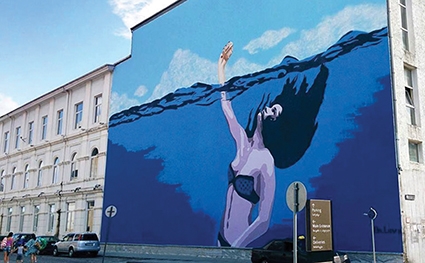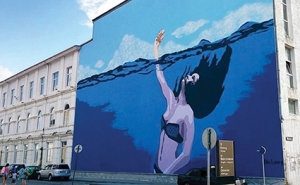Batumi’s Modern Street Art & Freedom of Expression
Batumi is the ultimate cultural hub, where ethnicities and religions become obsolete and freedom of expression acquires space to breathe. Art has been an essential pillar of Georgian existence for centuries, and it can be seen everywhere - from the city-center down to the most rural parts of the region. Time-torn, cracked buildings are reincarnated with a little touch of color that gives viewers a unique mixture of feelings. The messages sent by different talented artists are many; some of them cultural, involving traditional features, others more satirical or realistic. The impact that wall paintings have on everyday life is mesmerizing. Each of Batumi's street artworks has its own story that people can relate to, and as you might agree, there is nothing more beautiful than seeing a connection between souls.
Street Art first appeared on the walls of Batumi in 2013 and it has since become wildly popular all over Adjara. These walls have gathered so much attention that many well-known artists, including Gela Tsuladze, were so impressed that, with the support of the Adjaran Government, an annual Street Art Festival was set up.
Offbeat artworks, sometimes deviating from the local perception of art, constitute an immense cultural volume stretching between the gaps of age, gender and identity. Batumi has many controversial yet brilliant compositions on display, but by far the most popular street artwork in Batumi is “Selfie” by Dr. Love, to be found on the side-wall of the Batumi State University. Sky blue azure overlaps dark cobalt, creating a beautiful painting of the sea, where a young girl in a bikini is diving in and taking a selfie at the same time. The scale of this work suggests an emergence of a modern, multi-dimensional, pop-culture-based breakthrough on the Georgian art scene. Despite the critiques and controversies, the public is learning to appreciate the raw full color graffiti and street installations that Batumi can so proudly boast. The young generation, who spent most of their lives living in this gorgeous, Black Sea pearl, also acknowledge and welcome the increasing popularity of Street Art.
As Natia Sirabidze, Deputy Minister of Education, Culture and Sport of Adjara says, “All these paintings become a tourist destination. It creates novelty and embellishes the streets of Batumi, attracting locals and guests to take pictures in front of them. Our aim is to convert cultural products into tourism products. The more people coming to see the paintings, the more people promoting it on social media, the more popular the place becomes and the greater the economical benefit the region has.”
The Street Art Festival, launched two years ago, had 24 participants- 18 artists from Spain and 6 from Georgia. The festival lasted a week and generated numerous exclusive and extraordinary art pieces all around the region. This year, as the founder of Batumi Street Festival, Gela Tsuladze, announced, the Festival will incorporate four Georgian and two foreign artists. The only requirement for the participants was to work in the 3D style; otherwise, the festival strongly prohibits boundaries and has become increasingly attractive for its liberal approach towards limitations. Any concept or idea will be accepted and appreciated within its frameworks; all artists are free to express themselves and communicate with the people in the deepest way possible. The Festival inspires faith and confidence in Street Art and its ability to change the old perceptions and push people to move forwards, to grow, to love and to tolerate.
The 2016 Street Art Festival: 14 - 19 August.
Mariko Natsarishvili











